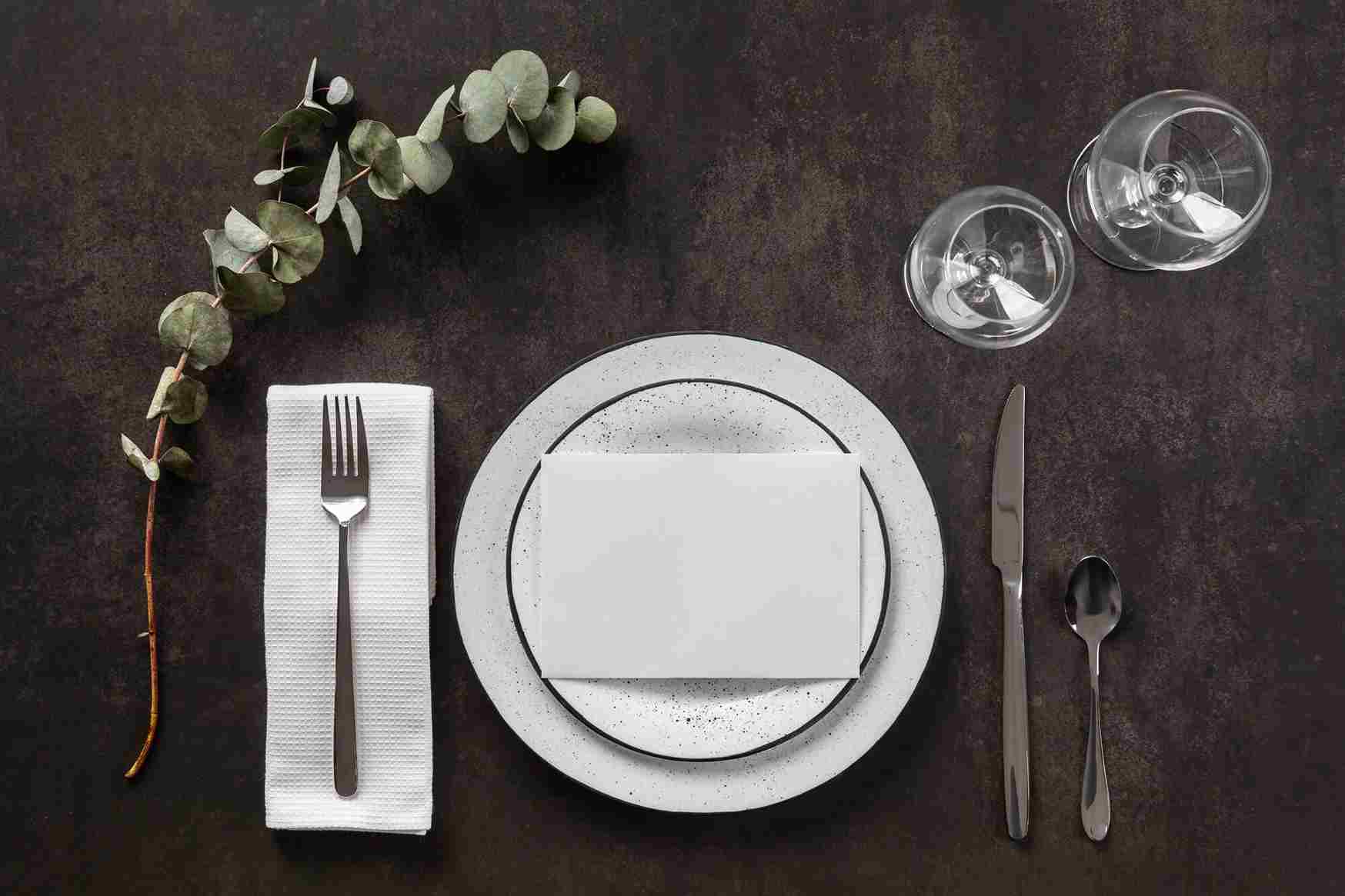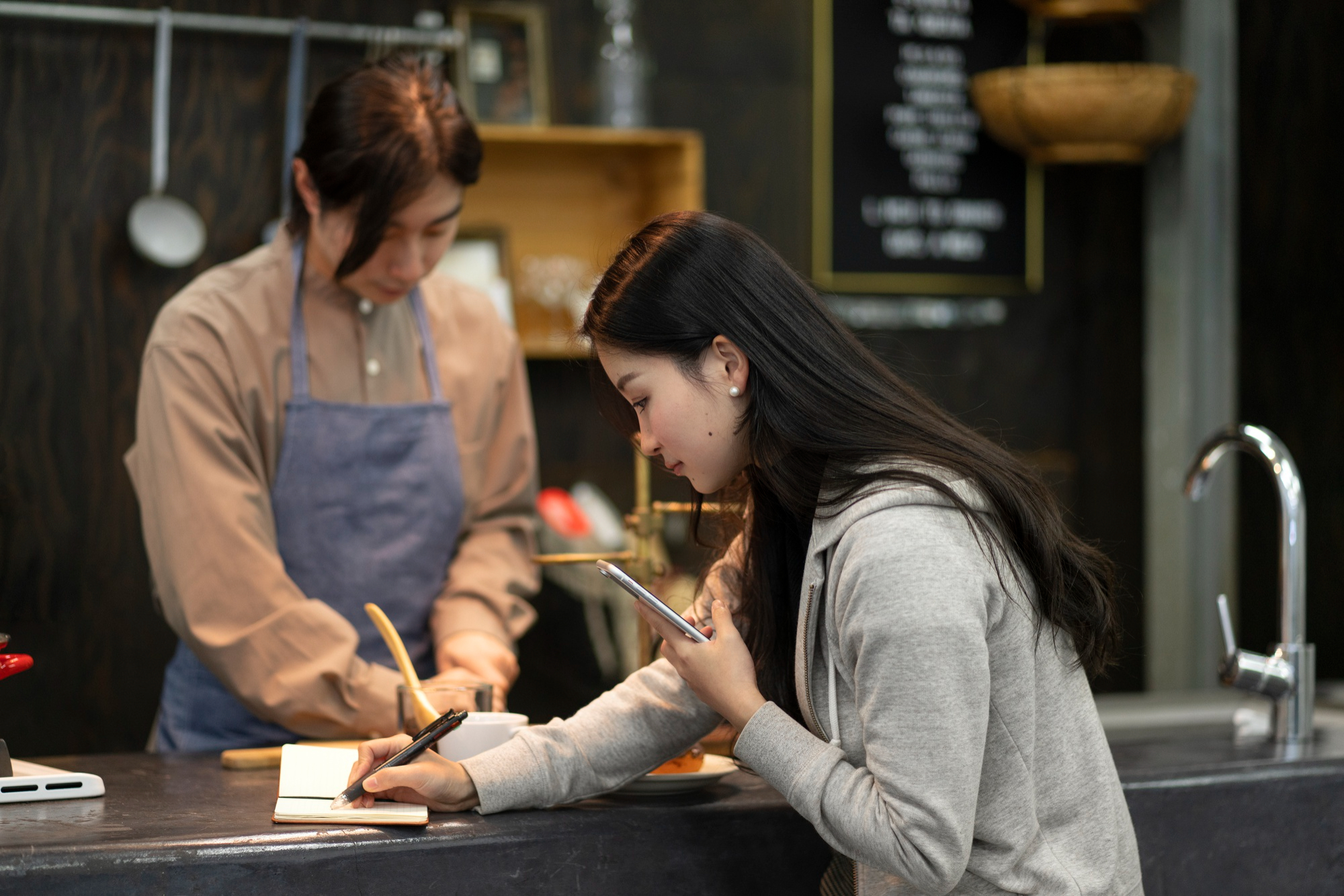 SHARE
SHARE
5 Types of Table Set Ups Most Often Used in Restaurants! Which do you use?
Briantama Afiq Ashari
Entering a neat and elegant restaurant definitely makes the sensation of eating more comfortable, right?
Well, this cannot be separated from the table set up that is applied. Table set up is an important element in a restaurant that is often taken for granted.
In fact, it has a big role in creating a more professional and enjoyable dining atmosphere.
Many restaurants use different table set ups according to the concept and type of service.
For example, fine dining restaurants certainly have more formal table manner set up standards than casual cafes.
Apart from that, there is also a basic table set up which is suitable for a casual restaurant concept.
If you have a culinary business, choosing the right type of table set up can make the restaurant look more professional.
Come on, get to know the five types of table set up that are most often used in restaurants and find out which one is most suitable!
Read Also: Reservations Are: Get to Know the Benefits and Practical Methods of Online Reservations
1. Basic Table Set Up
Restaurants with a casual or semi-formal concept usually use a basic table set up.
This type of table setting is simple, doesn't have too many decorative elements, but still makes the dining table look neat and professional.
Customers who come can immediately know where the cutlery is without having to worry about looking.
In a basic table set up, the table is only equipped with plates, spoons, forks and glasses.
The position of the cutlery is also arranged simply, not excessively, and is quite functional.
Typically, napkins are simply placed on the plate or next to the cutlery, without complicated folds.
Restaurants that want to provide a comfortable and practical dining sensation can choose this type of basic table set up.
Apart from being quicker in the preparation process, this table setting is also easier to clean after the customer has finished eating.
2. Formal Table Set Up
If you have ever eaten at a fine dining restaurant or attended a formal banquet, you are definitely familiar with formal table set ups.
This table setup is more complex than the basic table set up, because it prioritizes aesthetics and high-class service standards.
In a formal table manner set up, each guest will get more than one type of plate, spoon and fork.
Usually, there are special cutlery for appetizers, main dishes and desserts. Apart from that, there are several types of glasses for water, wine or other drinks.
Napkins in formal table set ups are often folded in an elegant shape or placed on the main plate.
Some restaurants also add decorative elements such as candles, flowers or menu cards to create a more exclusive atmosphere.
Restaurants that use formal table set ups generally target customers who want a more luxurious and classy dining experience.
With a neat and elegant layout, the restaurant can create a more comfortable and exclusive atmosphere for its guests.
3. Buffet Table Set Up
Restaurants with a buffet concept require a different table set up than regular restaurants.
Table layouts must be made more flexible so that customers can take food easily without disrupting the movement of other guests.
In a buffet table set up, eating utensils such as plates, spoons and forks are usually placed at the beginning or end of the buffet table.
Food is arranged in a certain order, usually from appetizer, main course, to dessert.
Some restaurants also provide special tables for drinks so customers can take them more easily.
Apart from that, buffet restaurants also need to take into account the layout of the dining table for guests who have already taken food.
Tables must be wide enough and spaced so that customers can move comfortably.
This buffet table set up concept is very suitable for all-you-can-eat restaurants, hotels, or special events that carry a self-service concept.
4. Family Style Table Set Up
Many restaurants carry the concept of eating together or "sharing" using a family style table set up.
This table setting is designed so that customers can share food more easily, without having to order individual dishes.
In this layout, the table is made wider to accommodate large plates and various types of dishes placed in the middle of the table.
Serving spoons and forks are also provided so that customers can take food more comfortably without using personal cutlery.
Restaurants with menus such as hotpot, typical family food, or dishes that are usually eaten in large crowds often use a family style table set up.
This concept makes the dining experience more intimate and enjoyable, especially for customers who come with family or friends in large numbers.
5. Cocktail Table Set Up
For a restaurant or bar with a lounge or standing party concept, a cocktail table set up is the most appropriate choice.
This type of table setting is designed so that guests can enjoy drinks and light snacks without having to sit in one place for too long.
In a cocktail table set up, the table used is smaller and higher than a regular dining table.
Usually, the table is only equipped with glasses, napkins and small plates for snacks.
Some restaurants also add decorations such as candles or small flowers to make the table look more attractive.
This concept is suitable for restaurants that often hold gatherings, private parties, or have a bar area that is active at night.
Types of Table Settings and How to Set Up Tables in Restaurants
Source: Freepik
After understanding the various table set ups that are most often used in restaurants, there is another aspect that is no less important, namely table setting.
If table set up is the arrangement of table positions and the layout of cutlery in a restaurant, then table setting focuses more on the details of the arrangement of the cutlery used.
Table setting covers many aspects, from choosing equipment to the basic rules for arranging them on the table.
Well, this is very influential in creating a comfortable eating experience for customers.
There are several types of table settings that are commonly used in restaurants, depending on the concept and level of formality.
Basic Table Setting
The basic table setting concept is suitable for casual restaurants that prioritize comfort and convenience for customers.
In the setting, the table is only equipped with basic cutlery, such as:
- B&B Plate (Bread & Butter Plate) for bread and butter.
- B&B Knife, a small knife for cutting bread or spreading butter.
- Dinner Fork placed on the left side of the main plate.
- Show Plate and Napkin as the main elements in serving.
- Dinner Knife placed on the right side of the plate with the blade facing inward.
- Water Goblet, a glass of water placed on a dinner knife.
This arrangement is very simple and is more often used for restaurants with a fast food or casual dining concept.
Standard Table Setting
For restaurants that offer a more formal dining experience than a basic table setting, they usually use a standard table setting.
The setting is similar to the basic setting, but there are additional cutlery for certain dishes.
- B&B Plate and B&B Knife remain the main parts in this setting.
- Dinner Fork and Dinner Knife are also still used.
- Soup Spoon, added for customers who order soup as an appetizer.
- Show Plate and Napkin, remain mandatory elements in this table setting.
- Water Goblet, still used as the main drinking place.
This type of setting is usually found in restaurants that serve a complete menu from appetizers, mains, to desserts.
Read Also: Get to Know the Meaning of Expired: Definition, Examples and Complete Explanation!
Elaborate Table Setting
For restaurants that hold formal banquets such as state meetings, fine dining, or special events, usually use elaborate table settings.
This type of setting has a more complex layout because it includes various cutlery for a complete meal from appetizer to dessert.
- B&B Plate and B&B Knife, remain the main pieces.
- Dinner Fork, Dinner Knife, and Soup Spoon, arranged in order of use.
- Dessert Fork, Dessert Knife, and Dessert Spoon, placed at the top of the main plate.
- Water Goblet, Red Wine Glass, and White Wine Glass, used according to the drink served.
- Show Plate and Napkin, remain the main part of the presentation.
Fine dining restaurants often use this layout to provide a more luxurious and exclusive dining experience.
How to Set Up the Correct Table Settings in a Restaurant
Sumber: Freepik
Apart from choosing the type of table setting that suits the restaurant concept, there are several important steps in setting up the table that must be considered.
Each element must be placed in accordance with applicable regulations so that customers can enjoy food comfortably.
1. Prepare Equipment in Clean Condition
Before setting up the table, make sure all the tableware is clean and ready to use. Use a special rag to clean silverware, glassware and chinaware to keep it sparkling.
2. Installing Linen and Table Cloth
Linen such as mouthton and table cloth must be installed neatly so that the table looks more elegant. Color selection can also be adjusted to the theme of the restaurant or event that is taking place.
3. Placing Table Accessories Correctly
Table accessories such as flower vases, ashtrays, salt & pepper shakers, sugar bowls, and table numbers must be placed in appropriate positions. Flower vases are usually placed in the middle of the table as a reference in arranging other accessories.
4. Arrange Silverware and Chinaware in the Right Order
Silverware such as dinner knives and dinner forks should be placed parallel to the show plate, with a distance of about 2 cm from the edge of the table. The fork is always on the left, unless used for seafood such as shrimp fork or oyster fork.
5. Place the Water Goblet and Glassware
The water glass should be placed about 2 cm above the dinner knife. If there are additional wine glasses, these glasses are placed sequentially under the water goblet in a parallel position or at an angle of 45°.
6. Arrange the Napkins on the Show Plate
Napkins can be placed on the show plate or to the left of the fork, depending on the restaurant concept. Some restaurants choose to fold napkins in interesting shapes to give a more elegant touch to the table.
Conclusion
After understanding the various types of table settings and the correct way to set up a table, there is one more thing that should not be missed, namely table reservation management.
It's useless if the table setting is perfect, but the reservation system is a mess.
Through ESB Book, restaurants can manage table reservations more practically and efficiently.
Customers can make reservations easily via various channels, such as telephone, in-person visits, or smartphones.
Another advantage, ESB Book allows integration with restaurant POS systems, meaning all reservations can be recorded immediately without errors.
Apart from that, customers can also make table reservations via ESB Order.
So, if your restaurant wants to increase efficiency in reservation management and table management, contact Team ESB for the best solution!
 SHARE
SHARE





